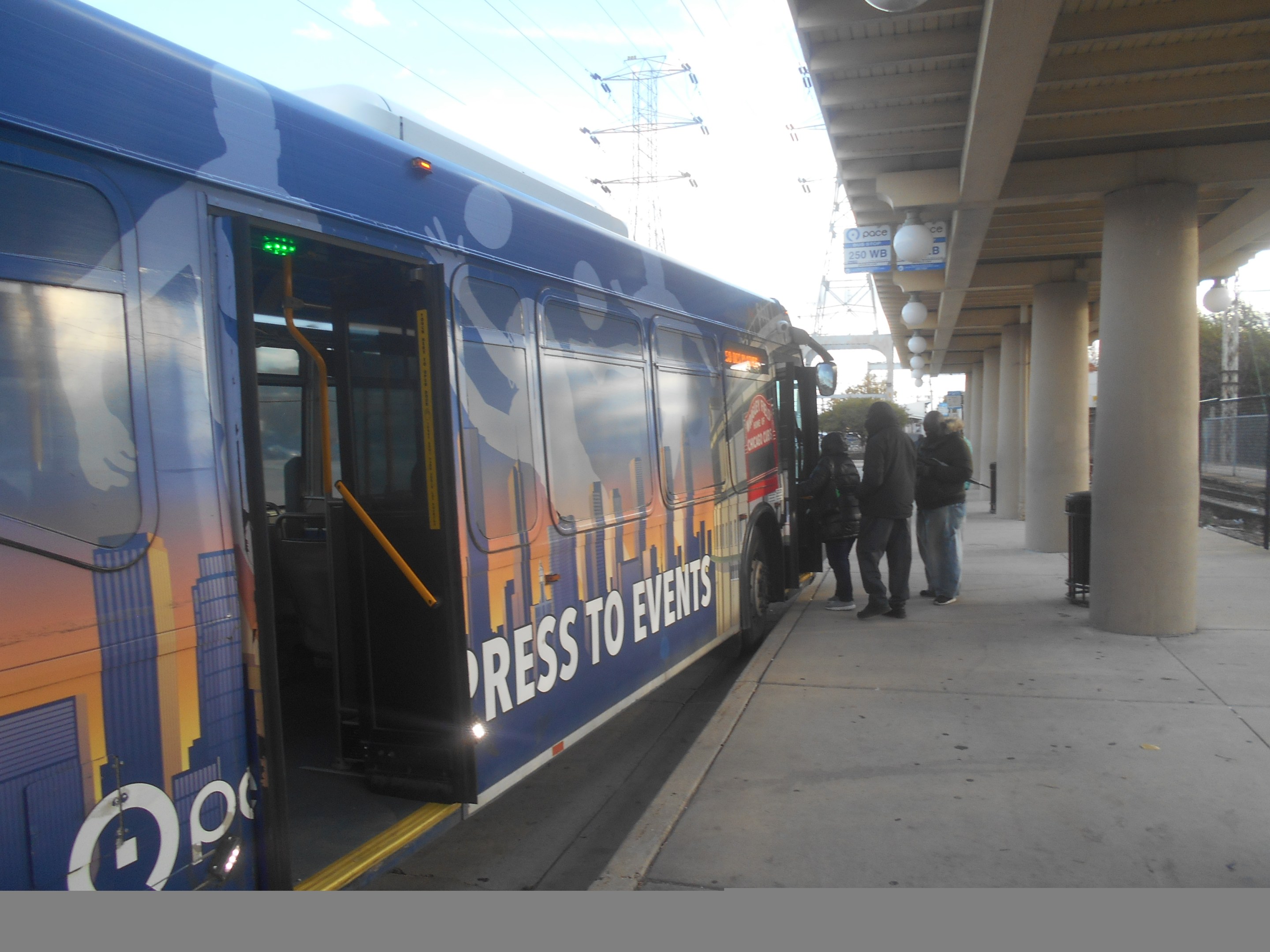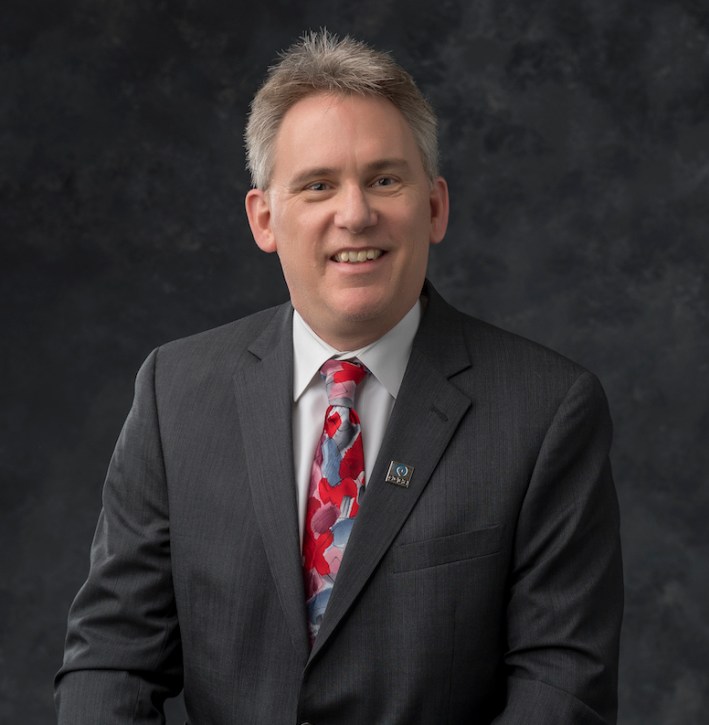Pace’s post-pandemic future will involve fewer fixed routes and more on-demand service and subsidized ride-share trips, at least outside major corridors.
This was the biggest takeaway from the presentation by retiring Pace executive director Rocky Donahue gave during the October 21 virtual seminar organized by the University of Illinois at Chicago’s Urban Transportation Center. Much of what he said echoed what was outlined in Pace’s Driving Innovation long-term development plan and his September 15 budget presentation to the agency’s board, which called for the expansion of dial-a-ride and on-demand services, and working with ride-hail companies to provide subsidized trips.
In the last two months, Donahue said that the 2022 budget will fund “the largest service expansion in Pace’s history.” While Pace has been vague on the details, Donahue's October 21 presentation offered the clearest indication yet that much of that expansion won’t involve fixed routes, and that at least some of the fixed routes may return in some other form. He argued that the current Pace system doesn’t serve most suburbanites well, and the COVID-19 pandemic gives the transit agency a unique opportunity to change that.
The current Pace status quo
As Donahue noted in his presentation, while Pace has the smallest budget of the three transit agencies operating under the Regional Transportation Authority in the Chicagoland six-county region, it has the largest service area of the three.
“In fact, we are the largest bus-only system in United States,” he said. “We operate in over 250 municipalities. Our area is one of the largest service areas in the country. It's almost the size of Connecticut.”
But the way the service is distributed has always been uneven. Pace was cobbled together from several regional and municipal transit agencies, and, as Donahue noted, many of the routes haven’t changed much since then. The areas that historically had dense service – suburbs near Chicago, as well as Aurora, Elgin, Joliet, Naperville and Waukegan – have multiple routes, but the service tends to peter out the further one gets from those places. Most notably, Pace currently only has four fixed routes in all of McHenry County. Even where the service exists, it’s less likely to run in the evenings or on the weekends.
During the March 24 Future of Suburban Transit Forum organized by the Active Transportation Alliance, transit advocates argued that the service gaps hindered essential workers’' abilities to get to to jobs in the suburbs, including shipping and warehouse jobs.
In spring 2020, in response to the COVID-19 pandemic, Pace suspended 75 routes and reduced schedules on 25 others. Most of the suspended routes were either feeder routes to Metra trains, last-mile reverse commuter shuttles, and suburb-to-suburb commuter expresses, so their return is contingent on when companies bring employees back to the offices. But several suspended routes provided local service. Route 241 served northwest-suburban Niles and Park Ridge on weekdays, while Route 372 served Chicago Heights, Flossmoor, and Homewood. Waukegan’s routes 566 and 573 served the McAree Road and Green Bay Road corridors, respectively. Route 608 served Schaumburg and Roselle, while Route 696 was the only Pace route serving Arlington Heights and the Harper College in neighboring Palatine.
In early August, Pace restored routes 241, 556 and 573, but the rest remain suspended.
Pace plans
In his presentation, Donahue argued that Pace was “in a very solid shape” before the pandemic hit. “Our ridership was stable, our budget was balanced and we were finishing up our strategic plan,” he said.
While Pace ridership and revenue plummeted during the crisis, and the agency had to spend additional money on pandemic mitigation, Donahue said Pace has since recovered somewhat since then, with ridership hitting about 66 percent of the pre-pandemic numbers. But the steep reduction in office commuting, he said, remains a problem for ridership and revenue, one that the end of the pandemic may not necessarily solve.
“Maybe [employees] are going back to the office two days a week, or three days a week, and not five days a week,” Donahue said. "We have to figure out. If that's a new normal, that's where their work habits are, we have to be prepared to deal with this piece.We have to seize opportunities to capture ridership in different ways.”
That include dial-a-ride or on-demand service, some kind of vanpool solution, or subsiding ride-hail. The transit agency currently has the Taxi Access Program, which allows paratransit-eligible riders to hail a taxi for a reduced price. Donahue said that it would work along the similar lines, except for all riders, with riders paying the standard Pace fare ($2.00) and the transit agency covering the rest.
Similar solutions may be used to address “transit deserts.” Donahue said that Pace wanted to get away from “put[ting] a big bus on the street, like we used to” as the only solution, citing a common criticism that Pace runs “a bunch of a big empty buses. We're going to have a new suburban system that's going to be responsive with the needs of today.”
While Donahue acknowledged that the less-used routes are “very important to the four people who do use [them],” they make not be the best use of Pace’s resources. “My crystal ball is you'll see less fixed-route service. I'm not sure that the traditional fixed route service will work. It works for those who use it, but for the vast majority of people, it doesn't work.”
Donahue described the pandemic as an opportunity to do major changes that otherwise may not have been politically viable. “On-demand service as well as micro-transit services, that's going to be a future of Pace, and that’s going to be okay. It's an exciting time, but it's going to be different than the bus up and down the street.”
At the same time, he highlighted Pace’s plans to improve service along major corridors via Arterial Rapid Transit Pulse buses, as well as potential new services along the Tri-State Tollway corridor.
While dial-a-ride and on-demand services do allow more flexibility, the devil is in the details. Both require riders to reserve routes ahead of time. In case of the dial-a-ride routes, at least a day's notice is usually required. Different dial-a-ride services have different fares, fare structures, eligibility requirements and hours of operation, and, like on-demand services, they are limited to specific geographical areas.
There is also the question of awareness. Bus stop signs show pretty clearly what the route is and where riders can catch a bus, but on-demand and dial-a-ride services are easy to miss if you don’t know what to look for. The former are at least labeled on the official transit maps. But the later don’t even have that.
Ride-hail subsidies raise the question of whether Pace is actually encouraging more car trips, especially along the busier suburban corridor, which is counterproductive to the goals of reducing congestion, pollution, and crashes.

I should also point out that Pace already has several routes that use smaller buses normally reserved for dial-a-ride services. McHenry County’s Routes 806, 807 and 808 use these, and so did the currently suspended Route 611 commuter shuttle. Their ridership never went above double digits even before the pandemic, and in my experience the size of the vehicle doesn’t impact the quality of the trip in any way. The only downside I've noticed is that the shorter buses don’t seem to show up on bus trackers.)
Toward the end of the meeting, I asked whether the local routes were coming back, mentioning Route 696, the Arlington Heights and Harper College route, as an example. “I’m not saying that it would never come back, but I'm not saying that it would definitely come back,” Donahue replied, adding that restoring 696 as a fixed route, some kind of on-demand service or ride-hail subsidy were all on the table. “For those who rode Route 696, and that's what they were used to, it worked, but was that the best way to service the community?”






